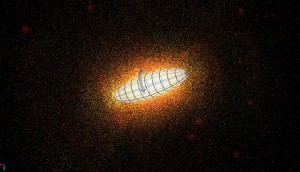Athanasia Tatsi is another Greek scientist at the forefront of global scientific research this time in the field of Astronomy.
Regarded as a brilliant young postdoctoral researcher at the Max Planck Institute for Astronomy (MPIA) in Heidelberg, Germany where she studies the formation history of elliptical galaxies and nuclear star clusters and in particular how mergers can explain their present-day dynamical structure.
Tatsi led the scientific team from MPIA who discovered eight new galaxies in the form of a spindle, thus proving them to be less rare than they were previously considered to be.
The remarkable discovery was made by means of the CALIFA sky survey, a systematic study on the velocity structure of more than 600 galaxies. The survey provided high-quality observational data that gave astronomers the possibility to create a model of the formation of such galaxies.
This model suggests that spindle-like or prolate rotating galaxies form when two spiral disk galaxies merge or collide at a certain angle. According to the new data, this special kind of collision occurs when gravity brings about an interaction between two spiral galaxies with one of them forming an elongated structure near the centre. This structure constitutes the longitudinal axis of the spindle while the stars of the two merged galaxies can be observed revolving around it.
Galaxy mergers are not an uncommon phenomenon. This is how the Milky Way formed and increased in size as a result of the addition of smaller galaxies to it.
Thanks to Tsatsis’ astronomy team, we have now come to see these majestic cosmic formations in a new light since the widely held view of galaxies as space disks is enriched with space spindles that rotate along their longest axis.
The results of the study have been published in the journal Astronomy & Astrophysics and are also available at archive.org.
Source: thegreekobserver.com
Ask me anything
Explore related questions





